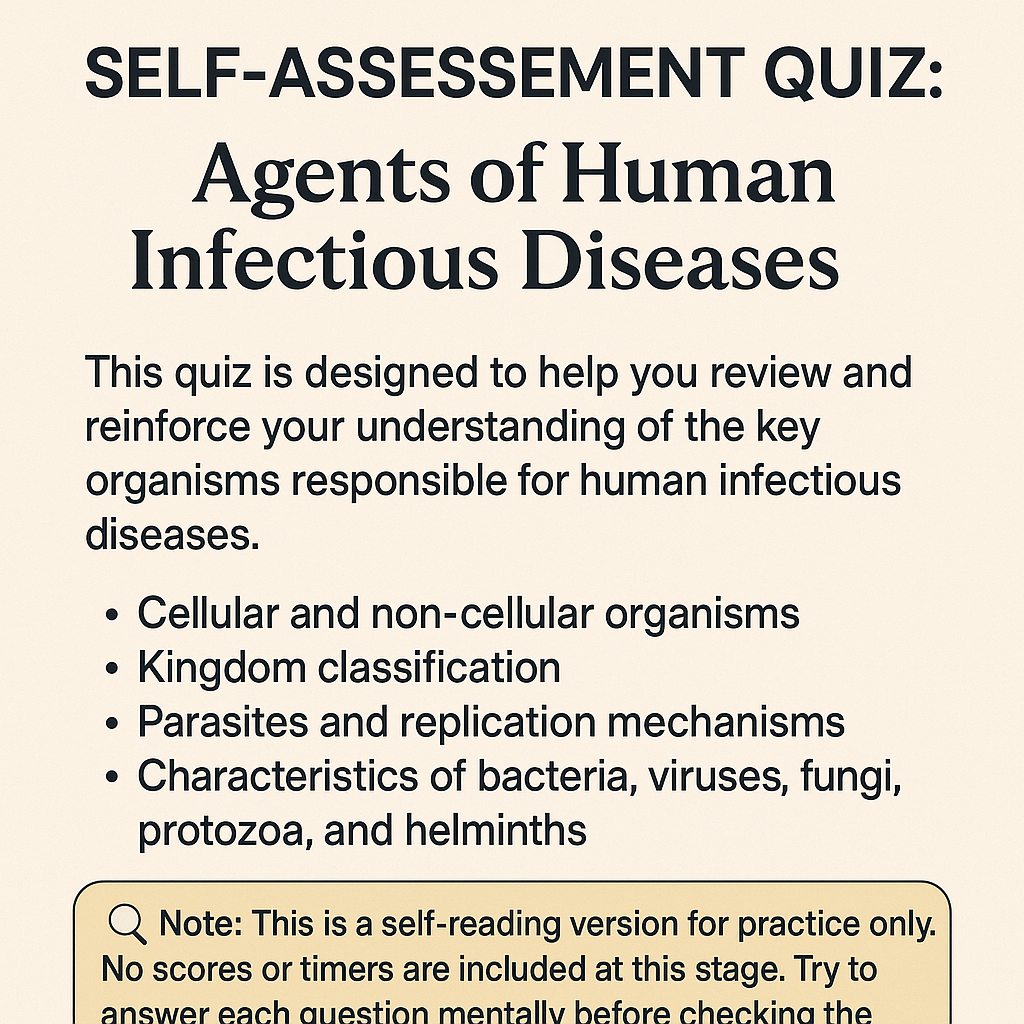Bacterial Shape, Size & Structure Quiz
Q111: Which is a plasmid-encoded enzyme for environmental cleanup?
A. Protease
B. DNAse
C. Degradative enzymes
D. Lipase
A. Protease
B. DNAse
C. Degradative enzymes
D. Lipase
Hint: Some plasmids carry genes for breaking down hazardous waste.
Q112: Which bacteria use plasmids for nitrogen fixation?
A. Rhizobium
B. Pseudomonas
C. E. coli
D. Mycobacterium
A. Rhizobium
B. Pseudomonas
C. E. coli
D. Mycobacterium
Hint: Rhizobium helps legumes by fixing nitrogen.
Q113: Plasmids are primarily composed of:
A. RNA
B. Protein
C. DNA
D. Carbohydrates
A. RNA
B. Protein
C. DNA
D. Carbohydrates
Hint: They are DNA molecules.
Q114: Bacteriocins kill other bacteria by:
A. Antibody production
B. Membrane disruption or DNA degradation
C. Phagocytosis
D. Conjugation
A. Antibody production
B. Membrane disruption or DNA degradation
C. Phagocytosis
D. Conjugation
Hint: These proteins punch holes in membranes or degrade DNA.
Q115: How many copies of small plasmids may exist per cell?
A. 1–3
B. 3–10
C. 10–60
D. 100–200
A. 1–3
B. 3–10
C. 10–60
D. 100–200
Hint: Small plasmids exist in many copies.
Q116: Plasmids can integrate into:
A. Viral genomes
B. Mitochondrial DNA
C. The bacterial chromosome
D. Ribosomes
A. Viral genomes
B. Mitochondrial DNA
C. The bacterial chromosome
D. Ribosomes
Hint: They can become part of the host genome.
Q117: Which of the following is NOT plasmid-encoded?
A. Resistance enzymes
B. Bacteriocins
C. Cell wall synthesis enzymes
D. Enterotoxins
A. Resistance enzymes
B. Bacteriocins
C. Cell wall synthesis enzymes
D. Enterotoxins
Hint: Cell wall synthesis is generally chromosomally encoded.
Q118: Plasmids mediate resistance to antiseptics such as:
A. Formalin
B. Mercurochrome
C. Ethanol
D. Phenol
A. Formalin
B. Mercurochrome
C. Ethanol
D. Phenol
Hint: Mercury resistance is often plasmid-borne.
Q119: Plasmid-encoded toxins include:
A. Endotoxins
B. Teichoic acids
C. Enterotoxins
D. Peptidoglycans
A. Endotoxins
B. Teichoic acids
C. Enterotoxins
D. Peptidoglycans
Hint: Some enterotoxins are encoded on plasmids.
✅ Answer Key:
Q111: C. Degradative enzymes Q112: A. Rhizobium Q113: C. DNA Q114: B. Membrane disruption or DNA degradation Q115: C. 10–60 Q116: C. The bacterial chromosome Q117: C. Cell wall synthesis enzymes Q118: B. Mercurochrome Q119: C. Enterotoxins
